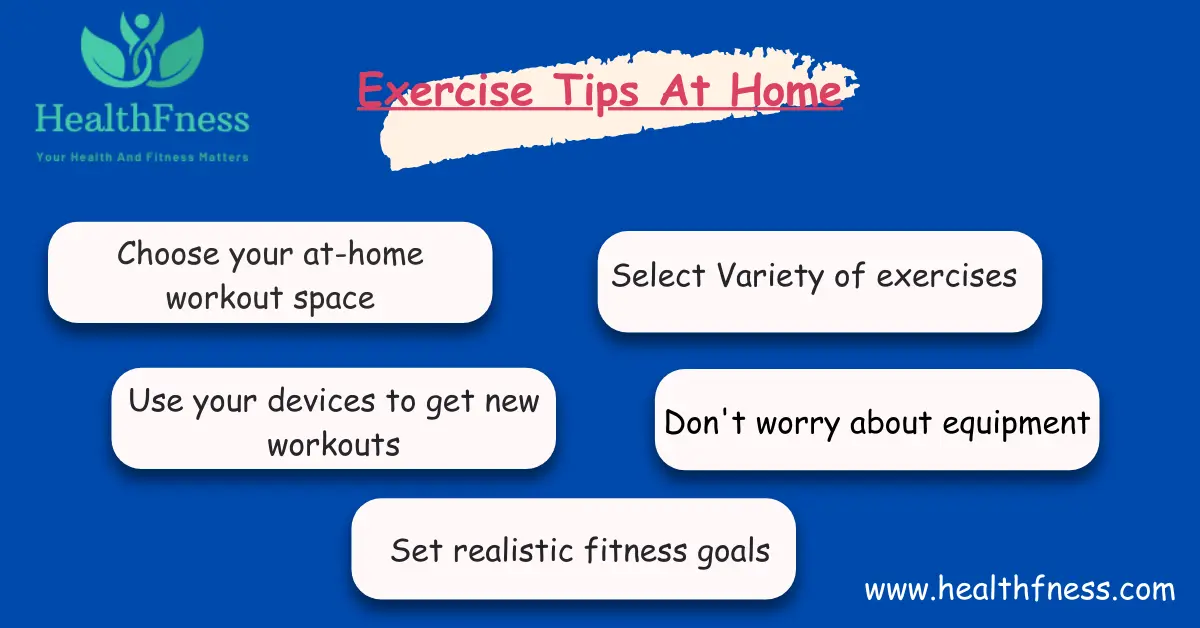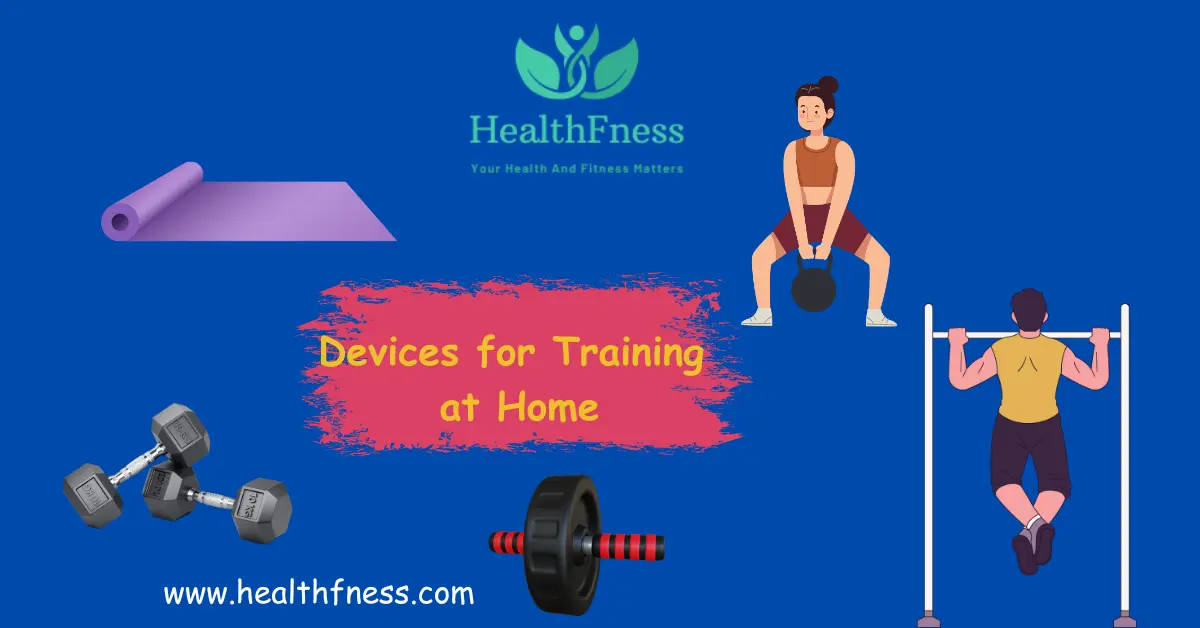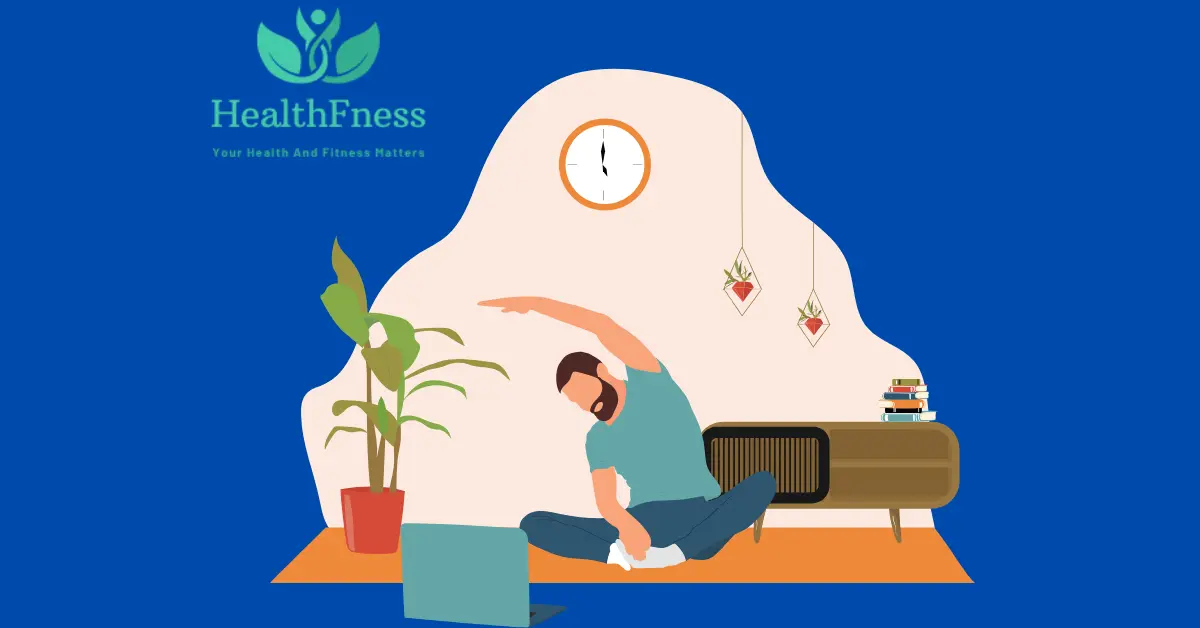Introduction
Those who want to stay healthy and fit do not necessarily have to go to the gym several times a week to fight for their favorite fitness equipment at peak times. You can also train at home without complications and without spending much money. Those who prefer to opt for this alternative can simply do exercises with their own body weight or buy a couple of devices to use at home.
Home Training🏋🏻
Home schooling gives comfort and versatility, allowing people to exercising with out the want for a fitness center club or tour. With the right equipment and area, you can create a committed education area tailor-made on your fitness dreams. Whether you select energy training, aerobic, or flexibility sports, a home gymnasium provides a snug and familiar environment for operating out.
What Are The Advantages Of Training At Home?
Training at home has grown in popularity in recent years, owing in part to the COVID-19 pandemic. There are numerous benefits to training🧘🏻 at home, which include:
Convenience
One of the most significant benefits of home training is the convenience it provides. You can work out whenever you want, without having to worry about gym hours or driving to a fitness center.
Saving money
Home training/workouts can help you save a lot of money. You don’t need to pay for a gym membership, and you can use inexpensive basic equipment or even go without any equipment at all.
Privacy
When working out in public, many people feel self-conscious or uneasy. Training in your own home can give you a sense of privacy and comfort.
Personalized workouts
When you exercise at home, you can design a workout💪 routine that is tailored to your specific needs and goals. This means you can customize your workout to target specific areas of your body or work towards a specific fitness goal.
Greater control
You have more control over your workout environment when you train at home. You can customize the temperature, lighting, and music to create a space that is both comfortable and motivating for you. That’s why home training is the best option.
Reduced distractions
You may be distracted by other people or noise in a gym🤔 or fitness center. You can focus on your workout without interruptions at home, which can help you stay focused and motivated.
Saving Time
saving time by not having to go to the gym and back.
Discover our tasty supplements for a healthy diet
How do you train at home?
If you train at home, it is obviously important that you also warm up a bit before exercising. The jumping jacks, skipping, sprints, knee raises, or light stretching They are very suitable for warm-up exercises.
As soon as you have successfully completed the warm-up session, you can move directly into the actual training. Home exercise planning is up to you. If you want to train with or without equipment, follow a training plan in 3 stages or 4 stages Tabata training it plays no role.
How To Get Fit Without Gadgets?
As we have already mentioned, there is also the possibility of training without🤸🏻 any device if you do it at home, since you can also easily develop your muscles or lose weight permanently without using them. Training with your body weight also offers a decisive advantage over training with weights.
Setup A Dedicated Training Space
When you have a dedicated training space, you are less likely to be distracted by other activities in your home, such as family members watching TV or pets running around.

| Step | Description | Details |
|---|---|---|
| Select the Appropriate Room or Area | Choose a Spacious Area | Ensure there’s enough space to move freely without obstructions. This could be a spare room, basement, or a nook in your living room. |
| Consider Privacy and Distraction Levels | Pick a location where you can focus without interruptions. | |
| Evaluate Natural Lighting | Good lighting can enhance your workout experience. | |
| Organize Your Space | Remove Clutter and Unnecessary Furniture | Clear out the space to make room for exercise equipment. |
| Incorporate Storage Solutions | Use shelves or bins to organize equipment and keep the area tidy. | |
| Add a Mirror for Technique and Form | A mirror helps in maintaining proper form during exercises. | |
| Check That You Have Enough Space for Your Exercises | Measure Space for Different Workouts | Ensure you have sufficient room for activities like yoga, strength training, and cardio exercises. |
| Ensure Adequate Overhead Clearance | Make sure there’s enough vertical space for movements like jumping jacks or high knees. | |
| Consider the Flooring | Benefits of Workout Mats | Protect joints and prevent slipping with workout mats. |
| Options for Foam Flooring | Foam flooring provides cushioning and is ideal for high-impact exercises. | |
| Carpet and Hardwood Considerations | Assess if your existing floor needs extra protection or padding. | |
| Add Some Motivational Elements | Use Posters and Quotes | Decorate with motivational posters to stay inspired. |
| Integrate Speakers for Music | Set up a sound system for music to keep energy levels high. | |
| Set Up a Television for Workout Videos | Use a TV for following along with workout routines and videos. | |
| Create a Workout Plan | Importance of a Workout Plan | Helps in setting and achieving fitness goals, ensuring variety, and tracking progress. |
| Determine Your Fitness Objectives | Weight Loss Goals | Define specific targets for weight loss. |
| Muscle Gain Goals | Set objectives for building muscle. | |
| Overall Fitness Goals | Aim for improved general health and fitness. | |
| Select Your Exercises | Strength Training Options | Choose exercises like lifting weights or using resistance bands. |
| Cardio Choices | Include activities like running, cycling, or HIIT. | |
| Stretching and Flexibility Exercises | Incorporate yoga or dynamic stretches. | |
| Make a Schedule | Weekly Exercise Breakdown | Plan which exercises to do on specific days. |
| Importance of Rest Days | Schedule rest days to allow your body to recover. | |
| Set Your Repetitions and Sets | Tailoring Reps and Sets to Your Goals | Adjust the number of reps and sets according to your fitness level and objectives. |
| Adjusting as You Progress | Modify your workout plan as you become fitter. | |
| Keep Track of Your Progress | Tracking Weight and Measurements | Record changes in your body metrics. |
| Monitoring Strength and Endurance Gains | Note improvements in strength and endurance over time. | |
| Reflecting on Overall Mood and Well-being | Keep track of how your workouts affect your mood and overall health. | |
| Maintaining Your Home Gym | Regular Cleaning and Maintenance | Keep your equipment and space clean and in good condition. |
| Updating Equipment as Needed | Replace or upgrade equipment to keep your gym effective. | |
| Overcoming Common Challenges | Staying Motivated | Find ways to keep your workouts interesting and rewarding. |
| Dealing with Limited Space | Utilize multi-functional equipment and optimize space usage. | |
| Managing Time Effectively | Schedule workouts at convenient times to ensure consistency. |
4 Exercises for training at home
Exercising at home without equipment can be an excellent way to maintain or begin a new workout routine. Here are the four best home exercises you can do without any equipment:
Bodyweight squats
Squats give a boost to the glutes, quads, and hamstrings. Stand with feet shoulder-width aside, again directly, and knees aligned with toes. Lower by bending knees as though sitting, then return to start. Do three units of 10-15 reps.
Push-ups
Push-united states work the chest, shoulders, and triceps. In a plank function, decrease your frame by means of bending your elbows, then thrust back up. Do 3 units of 10-15 reps.
Lunges
Lunges paintings the glutes, quads, and hamstrings. Step in advance, decrease to a 90-diploma knee bend, then thrust back up. Alternate legs for three sets of 10-15 reps every.
Plank
Planks toughen the center. From a push-up role, lower to forearms, retaining the body straight. Hold for 30-60 seconds. Do 3 sets.
Tips for training at home
- SCHEDULE YOUR EXERCISES AT HOME – Don’t expect to just fit in three sessions a week; choose days and times and block them in your calendar to promote adherence
- INVEST IN YOUR HOME GYM – You don’t have to spend a lot of money, but have quality equipment like an elliptical or treadmill, along with some inexpensive dumbbells and accessories like a mat, stability ball, and weight bands. resistance goes a long way in getting you – and staying – in shape.
- BUILD VARIETY – It’s okay to have your favorite workouts, but doing the same thing over and over can lead to boredom and burnout. Try exercise DVDs or a TV fitness show, search the internet or fitness magazines for new shows, experiment with different pre-programmed workouts on your cardio equipment, or hire a personal trainer for a few sessions to create different regimens. You can also attend a fitness class and integrate what you have learned into your workouts at home.
- USE DISTRACTIONS – If you’re having trouble getting going, make a new playlist that you can listen to while you work out. Watch movies or record your favorite shows and catch up during workouts.
- VARY YOUR TIME PERIODS – Exercising at the same time every day is a good way to stay on track. But you don’t have to commit to an hour, for example, at each workout. You can mix up the duration by integrating a few 30 or 45-minute sessions as they are easier to commit to and can boost adherence.
What Are The Most Suitable Devices For Training At Home?
The answer to this question depends on both your physical condition and your goals. Whether you want to train at home to develop your muscles or lose weight certainly also plays a role when choosing the equipment. In principle, you don’t need any device although they can be quite practical. That is why we have selected the 5 best devices to train at home.
Yoga Mat
The yoga mat should be a must for training within your four walls. It is much more comfortable to warm up and train than on the hard ground.
Kettlebell
The kettlebell is a versatile weight used in functional training. If you are looking to develop your muscles with the help of exercise at home, Russian weights are an essential tool to achieve that goal.

DumbBells
This device is not for nothing a classic among home fitness enthusiasts. Thanks to its adjustable weights, you will be able to take advantage of them in a lasting way to favor your muscle building.
Abdominal Roller
The abdominal roller is a good complement to abdominal training because it allows you to strengthen all the muscles of the trunk and improve your coordination.
Chin-Up Bar
Pull-ups are an extremely effective bodyweight exercise, especially for toning the biceps and back. If you want to be able to do them at home, you’ll need a pull-up bar. If you still can’t do pull-ups, you can start by using elastic bands for support.
FAQS
What are the advantages of home training?
Working out at home can save time and money, reduce distractions, and provide greater flexibility in terms of workout schedules and routines.
Is there anything I need to train at home?
While some workouts necessitate the use of equipment, many exercises can be performed without it. Bodyweight exercises such as push-ups, squats, and lunges are good for increasing strength and endurance.
How do I stay motivated when working out at home?
Setting specific goals, tracking your progress, and incorporating variety into your workout routine can all help you stay motivated. You can also try working out with a partner or getting workout inspiration from apps and online resources.
How long should my home workouts last?
The length of your home workout sessions will be determined by your fitness level and goals. Aim for at least 30 minutes of moderate-intensity exercise on most days of the week.
How can I keep myself safe while training at home?
It is critical to properly warm up before beginning your workout and to gradually increase the intensity and duration of your workouts over time. During exercises, use proper form and technique, and rest and recover as needed.
Can I still meet my fitness goals if I train at home?
Yes, you can achieve your fitness goals by training at home as long as you stick to a regular workout routine and incorporate a variety of exercises to target different muscle groups and fitness components.
How do I create a workout plan for home training?
Determine your fitness goals, select exercises to help you reach them, plan your schedule and sets/repetitions, and track your progress over time. Depending on your progress and feedback from your body, adjust your plan as needed.
Conclusion
In conclusion, home training is an excellent option for those who want to stay fit and healthy without leaving the comfort of their own homes. You can set up a dedicated training space and design a workout plan that fits your goals and lifestyle with a little imagination and motivation. You can achieve your fitness goals and feel your best by prioritizing your health and incorporating exercise into your daily routine. So, why not give home training a shot and see what you think?

